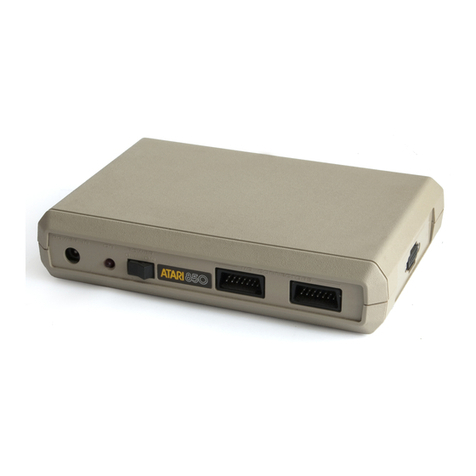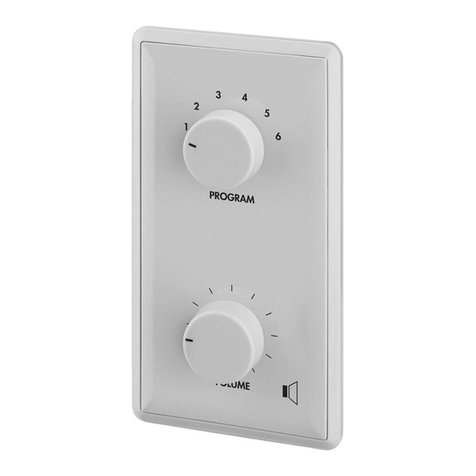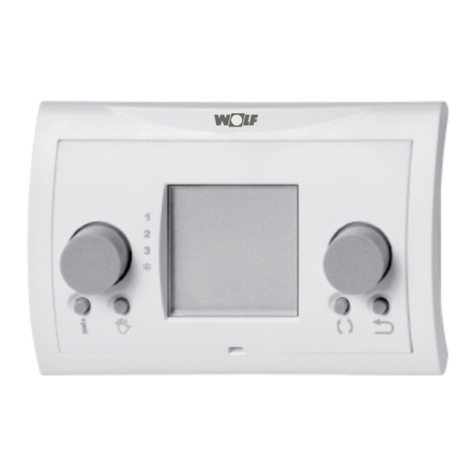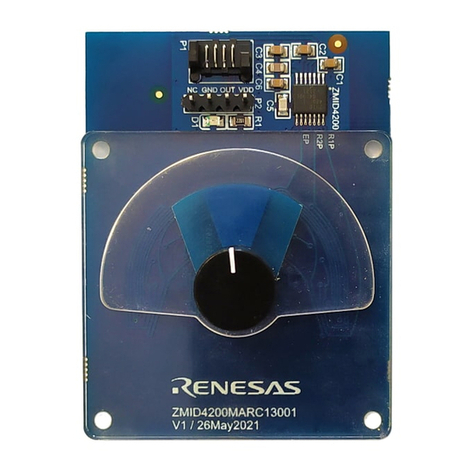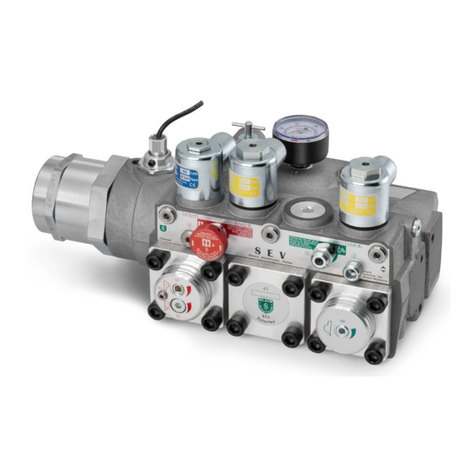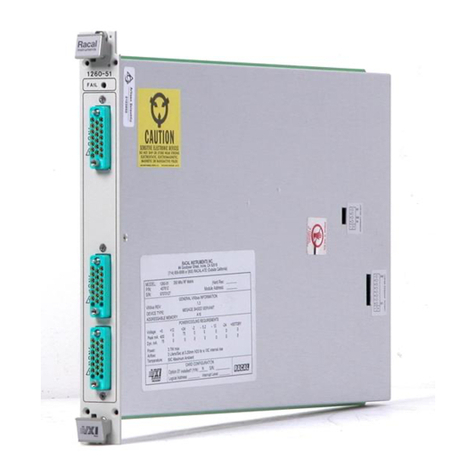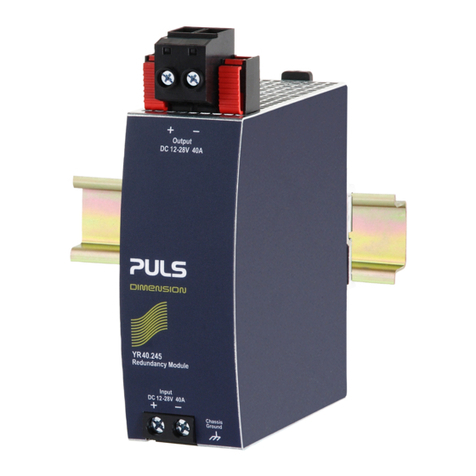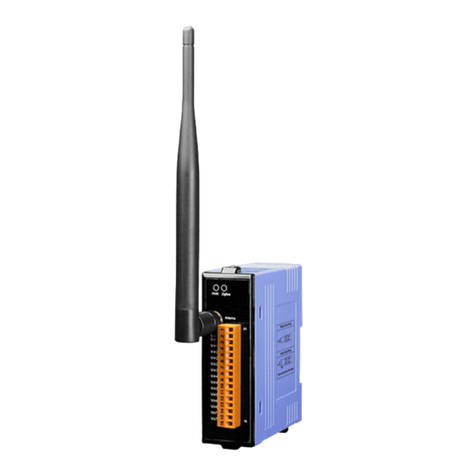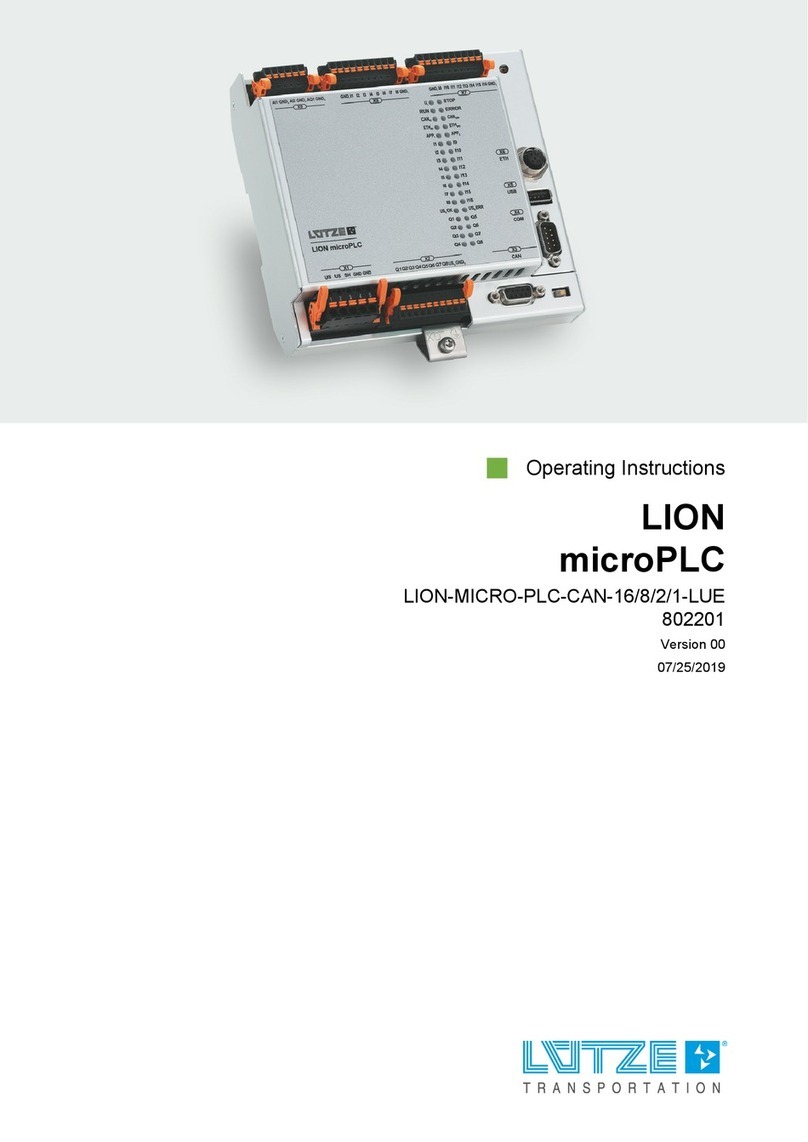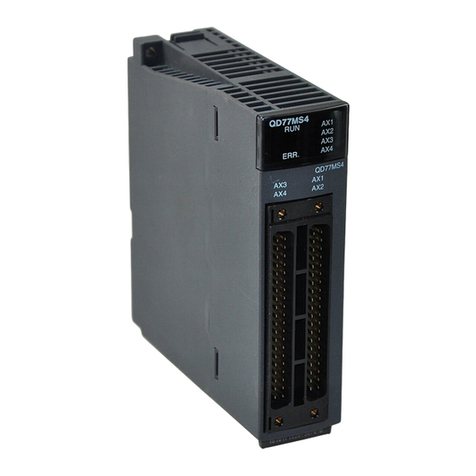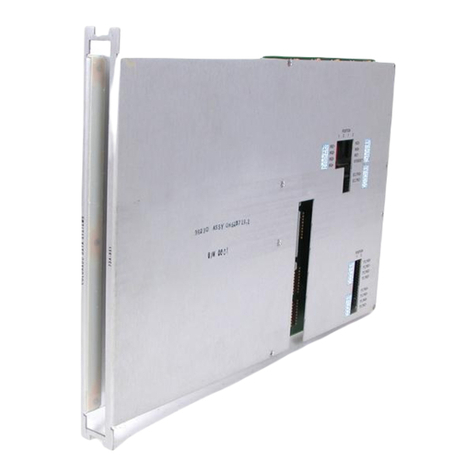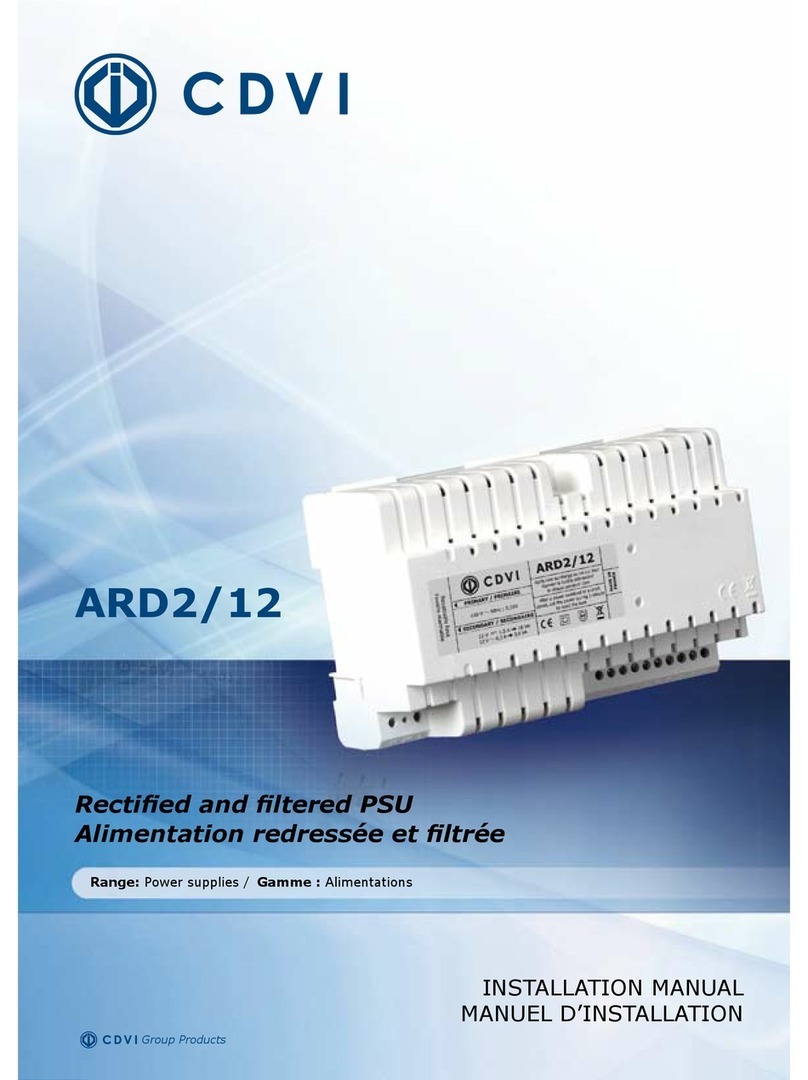Neles Easyflow J7 Series Operating and maintenance manual

Easyow by Neles™
J7 Series Reduced bore
anged ball valve
DN15 - DN200 (1/2” - 8”)
Installation, Maintenance and
Operating Instructions
IMO-240 EN Issue 7/2020

IMO-240 EN - Issue 7/20202
READ THESE INSTRUCTIONS FIRST!
These instructions provide information about safe handling and
operation of the valve.
If you require additional assistance, please contact the
manufacturer or manufacturer’s representative.
SAVE THESE INSTRUCTIONS!
Addresses and phone numbers are printed on the back cover.
Table of contents
GENERAL 3
Scope of the Manual 3
Valve markings 3
Safety Precautions 3
TRANSPORTATION
AND STORAGE 3
INSTALLATION 3
General 3
Installing in the Pipeline 4
Valve Insulation 4
Actuator 4
Commissioning 4
MAINTENANCE 4
General 4
Actuated Valve 4
Valve Disassembly 5
Checking Parts 5
Valve Assembly 5
Testing the Valve 6
ACTUATOR 6
Actuator Mounting Instructions 6
SERVICE / SPARE PART 7
EXPLODED VIEW 8
TYPE CODE 9

3IMO-240 EN - Issue 7/2020
1. GENERAL
1.1 SCOPE OF THE MANUAL
This instruction manual contains important information regarding
the installation, operation and maintenance of Easyow by Neles™
J7 Series reduced bore anged seat supported ball valves. Please
read these instructions carefully and save them for future reference.
WARNING:
THE USE OF THE VALVE IS APPLICATION SPECIFIC.
BE SURE THAT THE VALVE IS SUITABLE FOR ITS
INTENDED SERVICE. IF YOU HAVE ANY QUESTIONS
CONCERNING THE USE, APPLICATION OR
COMPATIBILITY OF THE VALVE WITH THE INTENDED
SERVICE, CONTACT NELES FOR MORE INFORMATION.
1.2 VALVE MARKINGS
The valve has a name plate attached to the valve body. The name
plate markings identify the size, materials of construction, pressure
rating, month and year of construction, and a unique manufacturing
order number.
1.3 SAFETY PRECAUTIONS
WARNING:
DO NOT EXCEED THE VALVE PERFORMANCE
LIMITATIONS!
EXCEEDING THE PRESSURE OR TEMPERATURE
LIMITATIONS MARKED ON THE VALVE NAME PLATE
MAY CAUSE DAMAGE AND LEAD TO UNCONTROLLED
PRESSURE RELEASE. DAMAGE OR PERSONAL INJURY
MAY RESULT.
WARNING:
SEAT AND BODY RATINGS!
THE PRACTICAL AND SAFE USE OF THIS PRODUCT IS
DETERMINED BY BOTH THE SEAT AND BODY RATINGS.
READ THE NAME PLATE AND CHECK BOTH RATINGS.
SOME SEAT MATERIALS HAVE PRESSURE RATINGS THAT
ARE LESS THAN THE BODY RATING. ALL OF THE BODY
AND SEAT RATINGS ARE DEPENDENT ON VALVE TYPE
AND SEAT MATERIAL. DO NOT EXCEED THESE RATINGS!
WARNING:
BEWARE OF BALL MOVEMENT!
KEEP HANDS, OTHER PARTS OF THE BODY, TOOLS
AND OTHER OBJECTS OUT OF THE OPEN FLOW
PORT. LEAVE NO FOREIGN OBJECTS INSIDE THE
PIPELINE. WHEN THE VALVE IS ACTUATED, THE BALL
FUNCTIONS AS A CUTTING DEVICE. DISCONNECT ANY
PNEUMATIC SUPPLY LINES, ANY ELECTRICAL POWER
SOURCES AND MAKE SURE SPRINGS IN SPRING-
RETURN ACTUATORS ARE IN THE FULL EXTENDED/
RELAXED STATE BEFORE PERFORMING ANY VALVE
MAINTENANCE. FAILURE TO DO THIS MAY RESULT IN
DAMAGE OR PERSONAL INJURY!
WARNING:
WHEN HANDLING THE VALVE OR VALVE/ACTUATOR
ASSEMBLY, TAKE ITS WEIGHT INTO ACCOUNT!
NEVER LIFT THE VALVE OR VALVE/ACTUATOR
ASSEMBLY BY THE ACTUATOR, POSITIONER, LIMIT
SWITCH OR THEIR PIPING / BRACKETS. PLACE LIFTING
DEVICES SECURELY AROUND THE VALVE BODY.
FAILURE TO FOLLOW THESE INSTRUCTIONS MAY
RESULT IN DAMAGE OR PERSONAL INJURY FROM
FALLING PARTS (SEE FIGURE 1).
Figure 1. Lifting of the valve assembly
2. TRANSPORTATION AND
STORAGE
Check the valve and the accompanying devices for any damage
that may have occurred during transport.
Store the valve carefully. Store indoors in a cool, dry place.
Do not remove the ow port protectors until installing the valve.
Move the valve to its intended location just before installation.
If the valve(s) are to be stored for a long duration, follow the
recommendations of IMO-S1.
3. INSTALLATION
3 .1 GENERAL
Remove the ow port protectors and check that the valve is clean
inside. Clean valve if necessary.
Flush the pipeline carefully before installing the valve. Foreign
objects, such as sand or pieces of welding electrodes, will damage
the ball and seats.

IMO-240 EN - Issue 7/20204
3.2 INSTALLING IN THE PIPELINE
WARNING:
THE VALVE SHOULD BE TIGHTENED BETWEEN
FLANGES USING GASKETS AND FASTENERS
COMPATIBLE WITH THE APPLICATION, AND IN
COMPLIANCE WITH APPLICABLE PIPING CODES
AND STANDARDS. CENTER THE VALVE AND FLANGE
GASKETS CAREFULLY BETWEEN FLANGES. DO NOT
ATTEMPT TO CORRECT PIPELINE MISALIGNMENT BY
MEANS OF FLANGE BOLTING!
The valve may be installed in any position and oers tight
shut-o in either ow direction. When in a horizontal line, it is not
recommended to install a valve with the stem on the underneath
side as debris in the pipeline may enter the body cavity and damage
the gland packing.
Refer to Section 4, MAINTENANCE for stem seal adjustment. If
there is seepage past the stem seal upon installation, it means
the valve may have been subject to wide temperature variations in
shipment. Leak-tight performance will be restored by a simple stem
seal adjustment described in the MAINTENANCE section.
3.3 VALVE INSULATION
Easyow by Neles™ ball valves do not require insulation. If desired,
the valve may be insulated; however, the insulation must not continue
above the upper level of the valve. See Figure 2.
Figure 2. Insulation of the valve
3.4 ACTUATOR
WARNING:
WHEN INSTALLING THE ACTUATOR ON THE
VALVE, MAKE SURE THAT THE VALVE ASSEMBLY
FUNCTIONS PROPERLY. INFORMATION ON ACTUATOR
INSTALLATION IS GIVEN IN SECTION 7 OR IN THE
SEPARATE ACTUATOR INSTRUCTIONS.
The actuator should be installed in a manner that allows plenty of
room for its removal.
The actuator must not touch the pipeline, tanks, walls, or other
equipment because vibration may interfere with its operation.
3.5 COMMISSIONING
Ensure that there is no dirt or foreign objects left inside the valve
or pipeline. Flush the pipeline carefully. Make sure that the valve is
fully open when ushing.
Ensure that all nuts, ttings, and cables are properly fastened.
If so equipped, check that the actuator positioner and/ or switch(s)
are correctly adjusted. Actuator adjustment is in Section 5. To
adjust any accompanying device(s) refer to the separate control
equipment instruction manuals.
4. MAINTENANCE
4.1 GENERAL
Although Easyow by Neles™ valves are designed to work under
severe conditions, proper preventative maintenance can signicantly
help to prevent unplanned downtime and reduce the total cost of
ownership. Neles recommends inspecting valves at least every ve
(5) years. The inspection and maintenance frequency depend on
the actual application and process condition. Routine maintenance
consists of tightening the gland ange bolts (item 16 in exploded
view) periodically to compensate for stem seal wear.
Always loosen and tighten fasteners with the appropriate wrench to
avoid damaging the valve, handle, linkage, actuator, ttings or ats.
Overhaul maintenance consists of replacing seats and seals.
These parts may be obtained from Neles or an Authorized Neles
Distributor.
WARNING:
FOR YOUR SAFETY, IT IS IMPORTANT THE FOLLOWING
PRECAUTIONS BE TAKEN PRIOR TO REMOVAL OF
THE VALVE FROM THE PIPELINE OR BEFORE ANY
DISASSEMBLY:
1. BE SURE YOU KNOW WHAT FLUID IS IN THE
PIPELINE. IF THERE IS ANY DOUBT, DOUBLE-
CHECK WITH THE PROPER SUPERVISOR.
2. WEAR ANY PERSONAL PROTECTIVE EQUIPMENT
(PROTECTIVE CLOTHING OR EQUIPMENT)
REQUIRED WHEN WORKING WITH THE FLUID
INVOLVED.
3. DEPRESSURIZE THE PIPELINE AND CYCLE THE
VALVE AS FOLLOWS:
A. PLACE THE VALVE IN THE OPEN POSITION
AND DRAIN THE PIPELINE.
B. CYCLE THE VALVE TO RELIEVE RESIDUAL
PRESSURE IN THE BODY CAVITY BEFORE
REMOVAL FROM THE PIPELINE
C. AFTER REMOVAL AND BEFORE DISASSEMBLY,
CYCLE THE VALVE AGAIN SEVERAL TIMES.
4.2 ACTUATED VALVE
It is generally most convenient to detach the actuator and its auxiliary
devices before removing the valve from the pipeline. If the valve
package is small or if it is dicult to access, it may be more practical
to remove the entire assembly.
NOTE: To ensure proper reassembly, observe the position of the
actuator and positioner/limit switch with respect to the valve before
detaching the actuator.

5IMO-240 EN - Issue 7/2020
WARNING:
ALWAYS DISCONNECT THE ACTUATOR FROM ITS POWER
SOURCE, PNEUMATIC, HYDRAULIC OR ELECTRICAL,
BEFORE ATTEMPTING TO REMOVE IT FROM THE VALVE!
WARNING:
DO NOT REMOVE A SPRING-RETURN ACTUATOR UNLESS
A STOP-SCREW IS CARRYING THE SPRING FORCE!
1. Detach the air supply, electrical supply, hydraulic supply and
control signal cables or pipes from their connectors.
2. Remove the actuator mounting bracket screws.
3. Lift the actuator straight up in line with the valve stem until
the connection between actuator drive and valve stem is
completely disengaged.
4. Place actuator in a safe location to avoid damage or
personal injury.
4.3 VALVE DISASSEMBLY
NOTE: It is good practice to replace all seats and seals any time a
valve is disassembled.
NOTE: Always use original OEM parts to make sure that the valve
functions properly.
Numbers in ( ) refer to items shown in the exploded view
1. Follow the steps in all the WARNING sections above before
performing any work on the valve.
2. Open the valve.
3. Place the valve on a bench or other suitable working space.
4. Secure tank side ange to working surface to prevent
movement during disassembly.
5. Remove body nuts (20).
6. Lift end piece (2), body seal (17), body gasket (18), and seat
(4) from valve.
7. Close ball (3) by rotating stem (5) and lift ball (3) from body.
8. Remove lower seat (4) from valve body, being careful not to
scratch the body sealing surface behind the seat.
9. Remove gland nuts (16), gland ange (14), disc spring (13),
stem retainer 2 (10), v-ring stem seal (9), stem retainer 1
(8), and stem seal (6). Use caution to prevent denting or
scratching the sealing surface inside the packing bore.
10. Push stem (5) into valve body and carefully remove. Avoid
denting or scratching the sealing surface on the stem.
11. Remove bottom stem washer (7) from the body.
4.4 CHECKING PARTS
1. Clean all disassembled parts.
2. Check the stem (5) and ball (3) for damage. Pay particular
attention to the sealing areas.
3. Check all sealing and gasket surfaces on the body (1) and
end piece (2).
4. Replace any damaged parts.
5. Replace any fastener where the threads are damaged or have
been heated, stretched or corroded.
6. Replace any parts that have cracks, gouges or pits that will
aect sealing.
NOTE: When ordering spare parts, always include the following
information:
a. Valve type code as per technical bulletin and model
number from name plate,
b. If the valve is serialized - the serial number (stamped
on the valve body or name plate) or applicable
manufacturing order number,
c. Spare part set number as per Table 3.
4.5 VALVE ASSEMBLY
Numbers in ( ) refer to items shown in the exploded view.
It is advisable to replace seats and seals if complete disassembly
and reassembly become necessary.
1. Clean all valve components, if not previously done.
2. Inspect all components for damage before assembling the
valve. Look for damage to the sealing areas on the ball, stem,
and body.
3. With a brush, clean body studs (19) and gland stud (15)
of foreign material such as paint, thread locker, grime and
commodity. Inspect the threads for damage or defect with
appropriate ring or plug gage. Repair any out-of-tolerance
threads or replace in-kind.
4. Re-inspect all components for damage to the sealing areas, stem
(5), body (1), and end piece (2). Replace any damaged parts.
5. Carefully clean and polish the ball (3) sealing surface: It should
be free of all scratches and grooves.
6. If the ball is slightly damaged, it may be possible to smooth the
sealing surface with crocus cloth or equivalent. If deep scratches
are present, replace the ball.
7. With the body cavity facing up, insert one valve seat (4) into
the body (1) to below the stem bore. Tilt the seat into place and
position so the proper surface will be in contact with the ball.
8. Place stem washer (7) over stem (5) and gently press into
place against shoulder on stem (5).
9. Insert the stem (5) into the body (1), being careful not to
scratch the stem sealing surface; and press it gently up into
the stem bore until resistance is felt from the stem washer (7).
10. Holding stem (5) in place from the bottom, insert stem seal (6),
stem retainer 1 (8), v-ring stem seal (9), and stem retainer 2
(12) with both inner and outer o-rings (11) and (12).
11. Install disc springs (13) (see gure for proper orientation), gland
ange (14), and gland ange nuts (16).
Figure 3. Proper Disc Spring Arrangement (uncompressed)
12. Tighten gland nuts (16) evenly until stem seal (9) is
compressed and then tighten an additional ¼ turn. Visually
inspect to ensure gland ange (14) is parallel with top of
actuator mounting ange.
13. Rotate the stem (5) so the ball drive is in the closed position.
Place the ball (3) into the body cavity by partially rotating and
sliding the ball onto the stem (5) and against the seat (4).
Make certain the stem is roughly in the middle of the ball slot.
14. Place the second seat (4) into the end piece (2) in the correct
orientation so the proper surface contacts the ball.

IMO-240 EN - Issue 7/20206
15. Install the body seal (17) and body gasket (18) onto the end
piece (2).
16. Carefully place the end piece (2) on top of the body (1) and
loosely install the body nuts (20). Lightly lubricate stud threads
and face of nut with anti-seize grease. Tighten the body nuts in
an alternating sequence across the body, gradually increasing
the tightening torque in multiple steps to applicable torque
from Table 1.
Table 1
Body Nut Tightening Torque, N.m
Stud size Carbon steel Grade B7 Stainless steel Grade B8M
1/4 - 20 UNC 15 12
5/16 - 18 UNC 30 25
3/8 – 16 UNC 50 40
7/16 – 14 UNC 75 65
1/2 - 13 UNC 120 100
9/16 – 12 UNC 160 150
5/8 – 11 UNC 230 200
3/4 - 10 UNC 400 370
7/8 – 9 UNC 650 500
17. After fully tightening the stem seal and body joint ange, operate
valve to verify smooth operation during opening and closing.
18. If the actuator was removed, reinstall and set the actuator
stops as described in the ACTUATOR MOUNTING
INSTRUCTIONS Section.
4.6 TESTING THE VALVE
WARNING:
WHEN PRESSURE TESTING, EXERCISE CAUTION
AND MAKE SURE ALL EQUIPMENT USED IS IN GOOD
WORKING CONDITION AND APPROPRIATE FOR THE
INTENDED PRESSURE.
If the valve is to be tested prior to returning to service, make sure
the test pressures are in accordance with an applicable standard.
When testing the valve for external tightness, keep the ball in the
half open position.
If testing for seat tightness, please contact Neles for advice.
WARNING:
WHEN PERFORMING ANY TESTS, NEVER EXCEED
THE MAXIMUM OPERATING PRESSURE OR MAXIMUM
SHUT-OFF PRESSURE LISTED ON THE IDENTIFICATION
PLATE.
5. ACTUATOR
WARNING:
BEFORE INSTALLING THE VALVE AND ACTUATOR, BE
SURE THAT THE INDICATOR POINTER ON TOP OF THE
ACTUATOR IS CORRECTLY INDICATING THE VALVE
POSITION. FAILURE TO ASSEMBLE THESE PRODUCTS
TO INDICATE CORRECT VALVE POSITION COULD
RESULT IN DAMAGE OR PERSONAL INJURY.
CAUTION:
When installing or servicing a valve/ actuator assembly, the best
practice is to remove the entire assembly from service.
CAUTION:
An actuator should be remounted on the valve from which it was
removed. The actuator must be checked and readjusted for proper
open and close position each time it is remounted.
WARNING:
THE VALVE BODY AND MOUNTING INTERFACE
HAS BEEN DESIGNED TO SUPPORT THE WEIGHT
AND OPERATION OF NELES ACTUATORS AND
RECOMMENDED ACCESSORIES. USE OF THIS
INTERFACE TO SUPPORT ADDITIONAL EQUIPMENT
SUCH AS PEOPLE, LADDERS, ETC. MAY RESULT IN THE
FAILURE OF THE VALVE OR ACTUATOR AND MAY CAUSE
PERSONAL INJURY.
WARNING:
BEWARE OF BALL MOVEMENT!
KEEP HANDS, OTHER PARTS OF THE BODY, TOOLS
AND OTHER OBJECTS OUT OF THE OPEN FLOW PORT.
LEAVE NO FOREIGN OBJECTS INSIDE THE VALVE OR
PIPELINE. WHEN THE VALVE IS OPERATED, THE BALL
FUNCTIONS AS A CUTTING DEVICE.
5 .1 ACTUATOR MOUNTING
INSTRUCTIONS
1. When a spring-return actuator is being mounted, the valve should
be in the closed position for spring-to-close operation or in the
open position for the spring-to-open operation. When an electric
or double-acting pneumatic actuator is being mounted, the valve
position should correspond to the indicated actuator position.
2. Assemble actuator onto the valve, ensuring full engagement
between the stem and actuator drive, and the actuator fully
contacts the mounting face on the valve.
3. Tighten actuator mounting screws to the torque listed in Table 2.
CAUTION:
Do not exceed the tightening torque. Applying excessive tightening
torque can damage the aluminum threads in the actuator body.

7IMO-240 EN - Issue 7/2020
TABLE 2
Torque to Aluminum Body Actuators
Bolt Size No Lubrication to Screws
mm N.m
M6 6.8
M8 15
M10 30
M12 52
M16 122
M20 230
4. Cycle actuator and verify proper ball position in both open and
closed positions. Adjust the actuator travel stops as necessary.
6. SERVICE / SPARE PART
We recommend that valves be directed to Neles service centers for
maintenance. The service centers are equipped to provide rapid turn-
around at a reasonable cost and oer warranty for reconditioning
based on condition of each valve.
NOTE: When sending goods to the service center for repair, do not
disassemble them. Clean the valve carefully and ush the valve
internals. Include the material safety datasheet(s) (MSDS) for all
media owing through the valve. Valves sent to the service center
without MSDS datasheet(s) will not be accepted.
For further information on spare parts and service or assistance visit
our web-site at www.neles.com/products.
NOTE: When ordering spare parts, always include the following
information:
a. Valve type code as per technical bulletin and model
number from name plate,
b. If the valve is serialized - the serial number (stamped
on the valve body or name plate) or applicable
manufacturing order number,
c. Spare part set number as per Table 3.
*Sign.1 Sign.2 Sign.3 *Sign.4 #Sign.5 Spare part
sets
Valve
size
Series Seat
and seal
materials
O-Ring
material
Class rating Type codes
15 J7 ZG
(TFM™
1600 /
Graphite)
53
(FKM
Fluoroelastomer)
NA 15 J7ZG53
20 NA 20 J7ZG53
25 NA 25 J7ZG53
32 NA 32 J7ZG53
40 NA 40 J7ZG53
50 NA 50 J7ZG53
65 NA 65 J7ZG53
80 NA 80 J7ZG53
100 NA 100 J7ZG53
150 15 = Class 150 150 J7ZG53 15
30 = Class 300 150 J7ZG53 30
200 NA 200 J7ZG53
* leave space after Sign.1 and Sign.4
NA – Not applicable (both Class 150 and Class 300 have same spare part set)
# Sign.5 sufx 15 and 30 representing the valve class rating is applicable for DN150 valve size
e.g. 25 J7ZG53, 150 J7ZG53 15, 150 J7ZG53 30, etc.

IMO-240 EN - Issue 7/20208
7. EXPLODED VIEW
Figure 4.
Part list
Part no. Part name
1 Body
2 End piece
3 Ball
4* Seat
5 Stem
6* Stem seal
7* Stem washer
8* Stem retainer 1
9* V-ring stem seal
10* Stem retainer 2
11* Outer stem O-ring
12* Inner stem O-ring
13* Disc spring
14 Gland ange
15 Gland stud
16 Gland nut
17* Body seal
18* Body gasket
19 Body stud
20 Body nut
* These items form the spare part
set. Refer Table 3 for spare part
set details for each valve.
EXPLODED VIEW DN15 TO DN200

9IMO-240 EN - Issue 7/2020
8. TYPE CODE
EASYFLOW BY NELES J7 REDUCED BORE FLANGE FLOATING
BALL VALVE
1. 2. 3. 4. 5. 6. 7. 8. 9.
50 J7 15 22 36 36 ZG 53 -
1. Size, DN (NPS ref.)
15 15 (1/2) Note 2
20 20 (3/4)
25 25 (1)
32 32 (1 1/4)
40 40 (1 1/2)
50 50 (2)
65 65 (2 1/2)
80 80 (3)
100 100 (4)
150 150 (6)
200 200 (8) Note 1
Note 1: Class 150 only
Note 2: With full bore trim
2. Series
J7
3. Flange / rating
15 ASME Class 150
30 ASME Class 300
4. BODY MATERIAL
22 Carbon Steel (WCB)
36 Stainless Steel (CF8M)
5. Ball Material
36 316 Stainless Steel
6. Stem Material
36 316 Stainless Steel
43 17-4PH Stainless Steel
7. Seat and Seal Materials
ZG TFM™ 1600 / Graphite
8. O-Ring Material
53 Fluoroelastomer (FKM)
9. OPTIONS
- Blank, standard option
QCavity ller seat
TFM™ is a trademark of Dyneon, a 3M Company
NOTE:
As the use of the valve is application specific, a number of factors should be taken into account when selecting a valve for a given application.
Therefore, some of the applications in which the valves are used are outside the scope of this document. If you have any questions concerning
the use, application or compatibility of the valve with the intended service, contact nearest Neles sales office for more information.

IMO-240 EN - Issue 7/202010

11IMO-240 EN - Issue 7/2020

IMO-240 EN - 7/2020
Neles
Vanha Porvoontie 229, P.O. Box 304, FI-01301 Vantaa, Finland.
Tel. +358 10 417 5000. Fax +358 20 483 151
neles.com
Subject to change without prior notice. Neles, Jamesbury and Easyow by Neles, and certain other
trademarks, are either registered trademarks or trademarks of Neles Corporation or its subsidiaries or
aliates in the United States and/or in other countries. For more information www.neles.com/trademarks
This manual suits for next models
2
Table of contents
Other Neles Control Unit manuals
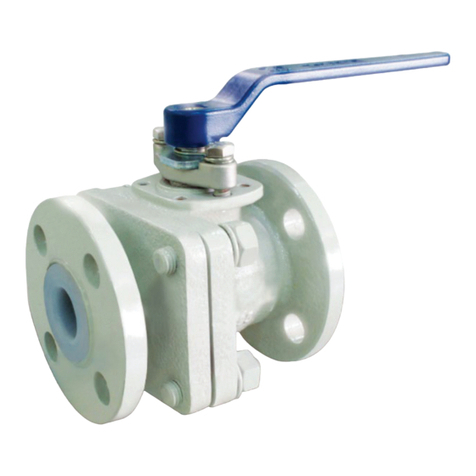
Neles
Neles PB2 Series Operating and maintenance manual
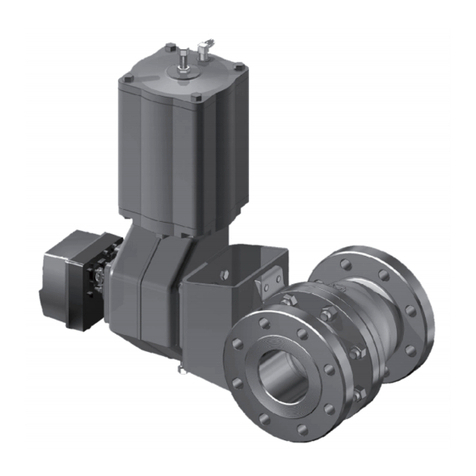
Neles
Neles XG Series Operating and maintenance manual
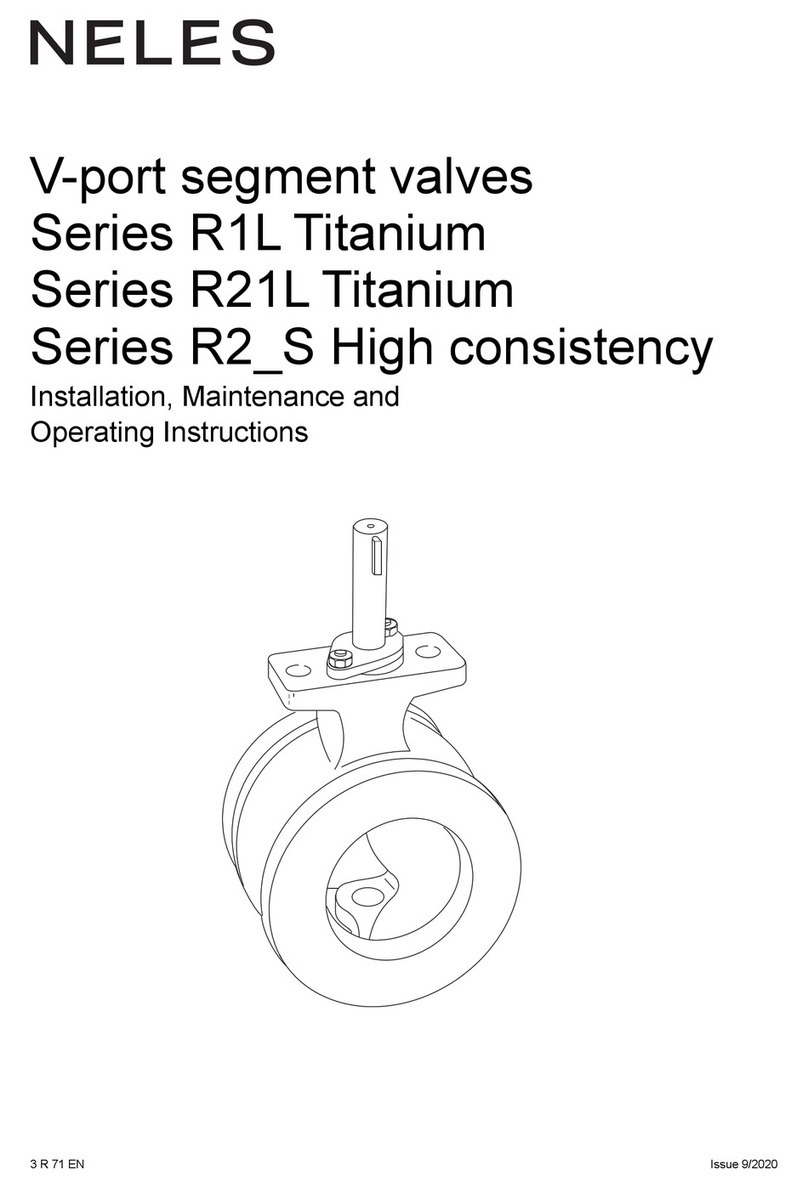
Neles
Neles R1L Titanium Series Operating and maintenance manual

Neles
Neles Metso T2 Series Operating and maintenance manual
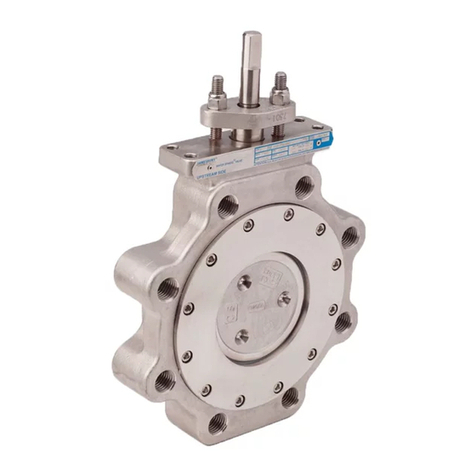
Neles
Neles Jamesbury Series Operating and maintenance manual

Neles
Neles JAMESBURY CLINCHER 2000 Series Operating and maintenance manual
